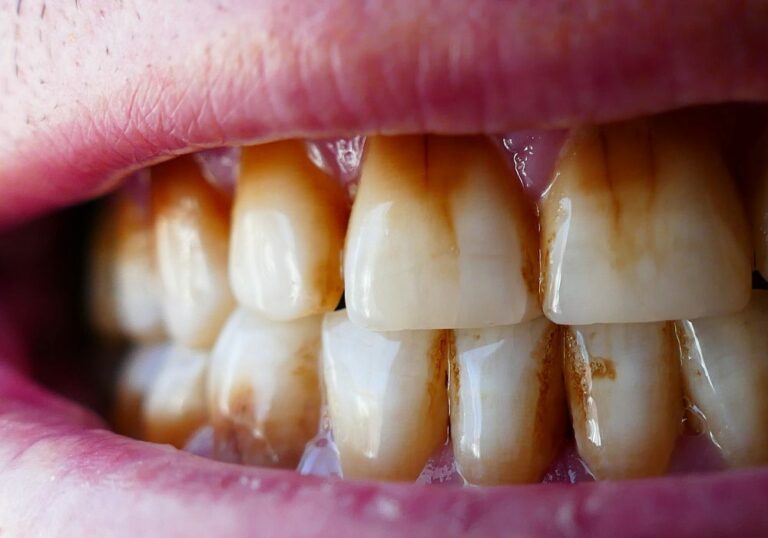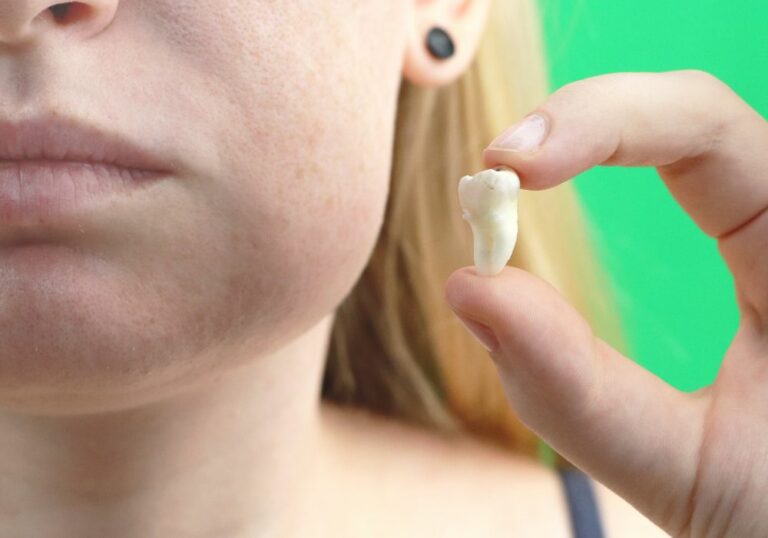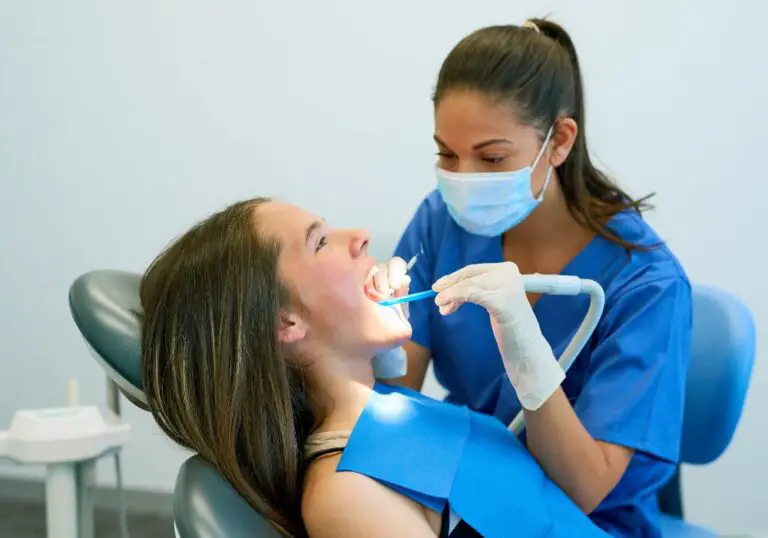What are black triangles and what causes them?
Black triangles, also known as open gingival embrasures or open gingival spaces, are gaps that form between teeth in areas where the gum has receded. They appear as black spaces or triangles, and expose more of the tooth root.
There are a few potential causes of black triangles between teeth:
Gum disease
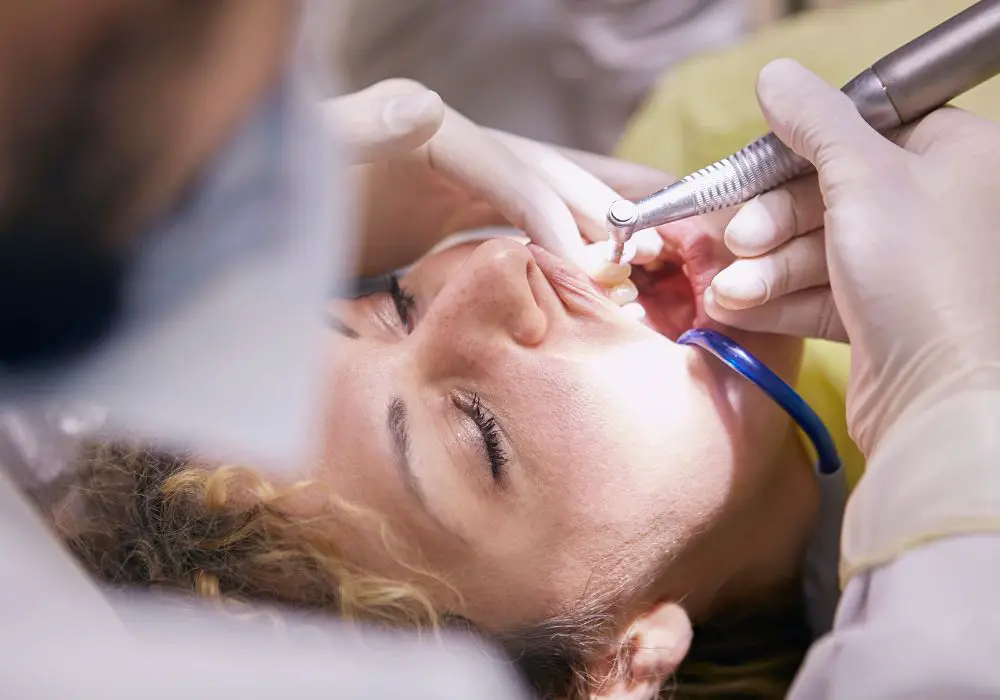
Gum disease, also known as periodontal disease, is the most common cause of black triangles. This oral condition causes inflammation and infection of the gums, which can lead to gum recession. As the gums recede, empty spaces are left between the teeth.
Gum disease occurs in stages, beginning with gingivitis. In this early stage, bacteria in plaque buildup around the teeth cause the gums to become inflamed. They appear red and swollen, and tend to bleed easily when brushing or flossing. At this point, gum recession has usually not occurred yet.
If gingivitis is left untreated, it can advance to moderate or severe periodontitis. In periodontitis, the gums pull further away from the tooth roots as connective tissue and bone support are destroyed by bacteria. Deepened periodontal pockets form, and more gum recession occurs. The gaps left between teeth will appear as black triangles.
Over time, periodontitis can cause teeth to loosen or lead to tooth loss altogether. That’s why it’s crucial to have gum disease treated promptly to halt its progression.
Aggressive brushing
Another factor that can recede the gums is overzealous brushing over many years. Using excessive force while brushing can traumatize the gum tissue. People often scrub vigorously in a forceful, horizontal direction without realizing how harsh it is on the gums.
This repeated irritation and inflammation of the gums causes them to gradually wear away and recede. Once the gumline pulls back, the empty spaces between teeth are exposed as black triangles. The triangular gaps will become more pronounced over time.
Hard bristled toothbrushes have greater potential to irritate and erode gums. Even using a soft brush, brushing aggressively can damage the gums. It’s best to use gentle circular massaging motions when brushing near the gumline.
Orthodontic treatment
Orthodontic appliances like traditional braces or clear aligners apply pressure to teeth to move them into proper position over time. This constant force can traumatize the gum tissue surrounding the teeth.
Once braces are removed after treatment, patients may notice gum recession and the appearance of black triangular gaps. The gums were essentially injured during the orthodontic process as they adapted to the repositioning of teeth. Proper oral hygiene and gum massage while wearing braces can help minimize this effect.
Periodontal surgery
Certain periodontal surgical procedures are done to treat gum disease and can inadvertently lead to gum recession afterwards. Examples include:
- Dental implant placement – Preparing the bone for an implant fixture can damage adjacent gum tissue and cause it to recede during healing.
- Crown lengthening – This procedure intentionally removes gum tissue around a tooth to expose more of the crown for restorative work. Triangles may form as the gumline is recontoured.
- Periodontal flap surgery – Flaps are lifted to clean beneath gums and sometimes tissue grafts are placed. The gums can recede slightly as they heal.
While these procedures are often necessary to treat disease or place restorations, they can thin the gum tissues. Communicating with your periodontist regarding gum recession risk is important.
Clenching or grinding teeth
Habitual teeth grinding or clenching (bruxism) can contribute to gum recession over time. The excessive forces placed on teeth continually irritate the gum tissue. This can cause thinning of the gum tissues as well as abfraction lesions along the gumline.
People are often unaware that they grind their teeth as it often occurs during sleep. Jaw pain, sore teeth, or face muscle ache upon waking are signs of possible bruxism. Managing stress and anxiety may help reduce grinding habits. Wearing a custom night guard can also help protect the teeth from damage during clenching and grinding.
Genetic factors
Some individuals are simply predisposed genetically to having thinner gums around their teeth. This type of thin gum biotype is more susceptible to receding after irritation or inflammation. The thin tissue cannot adequately protect the tooth roots, quickly exposing more of them along with triangular gaps between teeth.
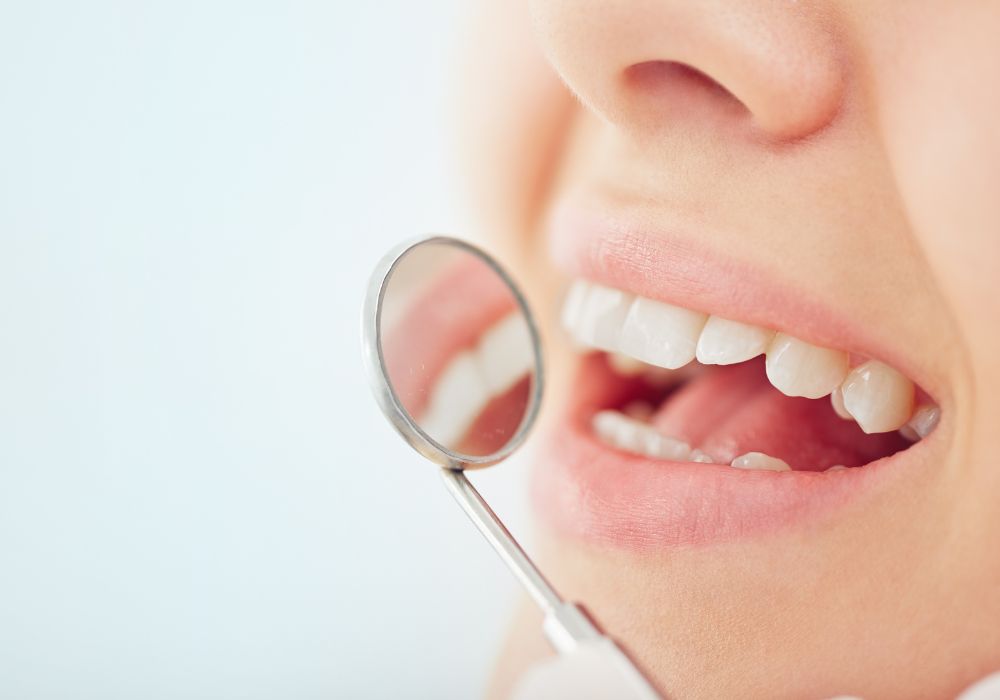
Mild gum recession and small black triangle gaps are relatively common as people get older. According to the American Dental Association, gum recession affects more than half of American adults over age 30 to some degree.
This can give the appearance of longer teeth and may expose small triangular spaces between them. Minor gum recession is generally harmless as long as it is monitored regularly by a dentist. If oral hygiene is maintained, the recession may not progress extensively.
However, quickly widening black triangles or advanced gum recession across multiple teeth is not normal. This signifies an inflammatory process like gum disease that requires treatment to halt further recession and bone loss. Leaving it untreated allows the problems to compound over time.
When should I see a dentist?
You should visit your dentist promptly if you notice any of the following:
- New black triangles forming suddenly
- Existing black triangles rapidly increasing in size
- Red, puffy, or bleeding gums
- Persistent bad breath or pus around the gums
- Teeth appearing loose or shifting
- Tooth or gum sensitivity to hot, cold, or acidic foods
- Exposed tooth roots that collect more plaque
Your dentist can perform an oral exam, periodontal probing, and possibly x-rays to determine the cause and extent of gum recession. Based on the findings, your dentist may provide treatment or refer you to a periodontist for specialized procedures.
Catching gum recession in early stages gives you the best chance of halting its progression before extensive damage occurs. Ignoring worsening gum problems allows further breakdown of gum tissues and bone around the teeth.
How are black triangles treated?

Several treatment options are available for dealing with black triangles, depending on their severity:
Improved oral hygiene
Practicing meticulous oral care is essential for managing gum disease and preventing recession from worsening. Your dentist can demonstrate specific brushing and flossing techniques to use around receded areas. Using a soft or ultrasoft bristle toothbrush is critical.
Antimicrobial mouthwashes may also be recommended as adjuncts to brushing and flossing. They reduce pathogenic oral bacteria and help diseased gums heal. Quitting smoking and other tobacco habits can also help reduce gum inflammation.
Professional dental cleanings
Regular dental cleanings every 3-6 months allow thorough plaque and calculus removal above and below the gumline. A dental hygienist using specialized instruments can access areas that are hard to keep clean with homecare. This disrupts disease progression and provides smoother tooth surfaces for gums to reattach to.
Gum graft surgery
For more significant gum recession, soft tissue grafting can help cover exposed roots and restore lost gum tissue. Small patches of tissue are taken from the roof of the mouth or donor tissue and surgically sutured over the receded areas. With adequate blood supply, the grafts integrate with existing tissue and the black triangles fill in with pink, healthy gums.
Pinhole surgical technique
This newer, minimally invasive procedure suits cases with minimal to moderate gum recession. The dentist uses special tools to gently loosen the existing gum tissue and slide it down over the exposed roots without grafts or flaps. Tiny pinhole incisions allow for repositioning the gum to cover black triangles. Recovery is rapid with minimal discomfort.
Restorations for tooth sensitivity
Recessed gums can expose tooth roots and make teeth painfully sensitive to hot and cold. Bonding, veneers, crowns, or fillings may be placed to cover sensitive, newly exposed surfaces for relief. However, restorations alone don’t address the gum recession itself.
Orthodontic treatment
If malocclusion or a bad bite is contributing to gum recession, orthodontic treatment may help. Braces or Invisalign can alleviate harmful pressures on gum tissue. This may allow gums to rebound somewhat after orthodontics. Proper oral hygiene is critical during treatment to avoid compounding recession.
Occlusal adjustment
Selectively smoothing or reshaping tooth surfaces in areas of high bite pressures can also reduce trauma to the gums. This is done conservatively but may minimize risk of worsening recession. Night guards are also prescribed for grinding and clenching. Managing stress often helps reduce these habits as well.
Dental splints and mouthguards
If nocturnal teeth grinding or clenching is causing gum recession, a mandibular splint or night guard can cushion the teeth and dissipate destructive forces. This protects areas of gum recession from further damage, giving inflamed tissues a chance to heal. Stress management and lifestyle changes may also help reduce grinding habits.
Can black triangles between teeth be prevented?

Yes, practicing excellent oral hygiene and getting routine professional care are effective in preventing gum recession and associated black triangles between teeth.
- Brush twice daily with a soft or extra soft bristle toothbrush using gentle motions. Avoid scrubbing aggressively.
- Floss once daily to remove plaque between teeth. Use light pressure and curve the floss around each tooth.
- Rinse daily with an antiseptic mouthwash to reduce oral bacteria.
- Have regular dental cleanings every 3-6 months to remove calculus below the gumline.
- Promptly treat any signs of gum inflammation or gingivitis to prevent progression to periodontitis.
- Stop tobacco habits like smoking, as tobacco severely worsens gum disease.
- Get restorative work done carefully to avoid unnecessary gum damage.
- Consider orthodontic treatment to correct any problematic bites placing excessive pressure on gum tissues.
- Use night guards if you grind your teeth to prevent gum irritation and recession.
With diligent daily home care and consistent professional cleanings, you can maintain healthy gums and avoid the gum recession that leads to black triangle gaps between teeth. Detecting and treating early gum disease is critical for optimal prevention.
Frequently Asked Questions
Why do my gums look black between my teeth?
The black appearance between teeth is caused by gum recession. As the gum tissue pulls away from the teeth, it leaves behind empty triangular gaps between the teeth. These spaces fill with shadow, so they take on a dark appearance and look black. The effect worsens as more of the tooth roots become exposed due to receding gums.
Can black triangles go away on their own?
Unfortunately, black triangles do not typically go away by themselves once they have formed. The gum recession is essentially permanent short of receiving treatment to rebuild gum tissue. As recession progresses, the gaps may even expand over time rather than improving spontaneously. Treating the cause of the receding gums is necessary.
Do black triangles mean I have gum disease?
Yes, the presence of black triangles indicates some level of gum disease is present. Even mild gingivitis can start to recede the gums enough to create gaps and triangles between teeth. More significant recession usually signifies moderate to advanced periodontitis, which requires professional treatment. The black triangles are a visible symptom of inflammatory gum disease.
Should I see a dentist or periodontist?
Your general dentist can diagnose gum recession and determine if periodontitis is causing your black triangles. Based on examination findings like pocket depths and bone levels on x-rays, your dentist may either treat your condition themselves or refer you to a periodontist if it is advanced. Periodontists can provide specialty gum procedures.
Can I close black triangle gaps between my teeth?
Yes, treatments like gum grafting and the pinhole technique can help cover exposed tooth surfaces and close or reduce black triangle gaps between teeth. Restorative options like bonding and veneers can also sometimes be used to cosmetically fill in the empty spaces. However, the gum recession itself still needs to be addressed to prevent worsening over time.

